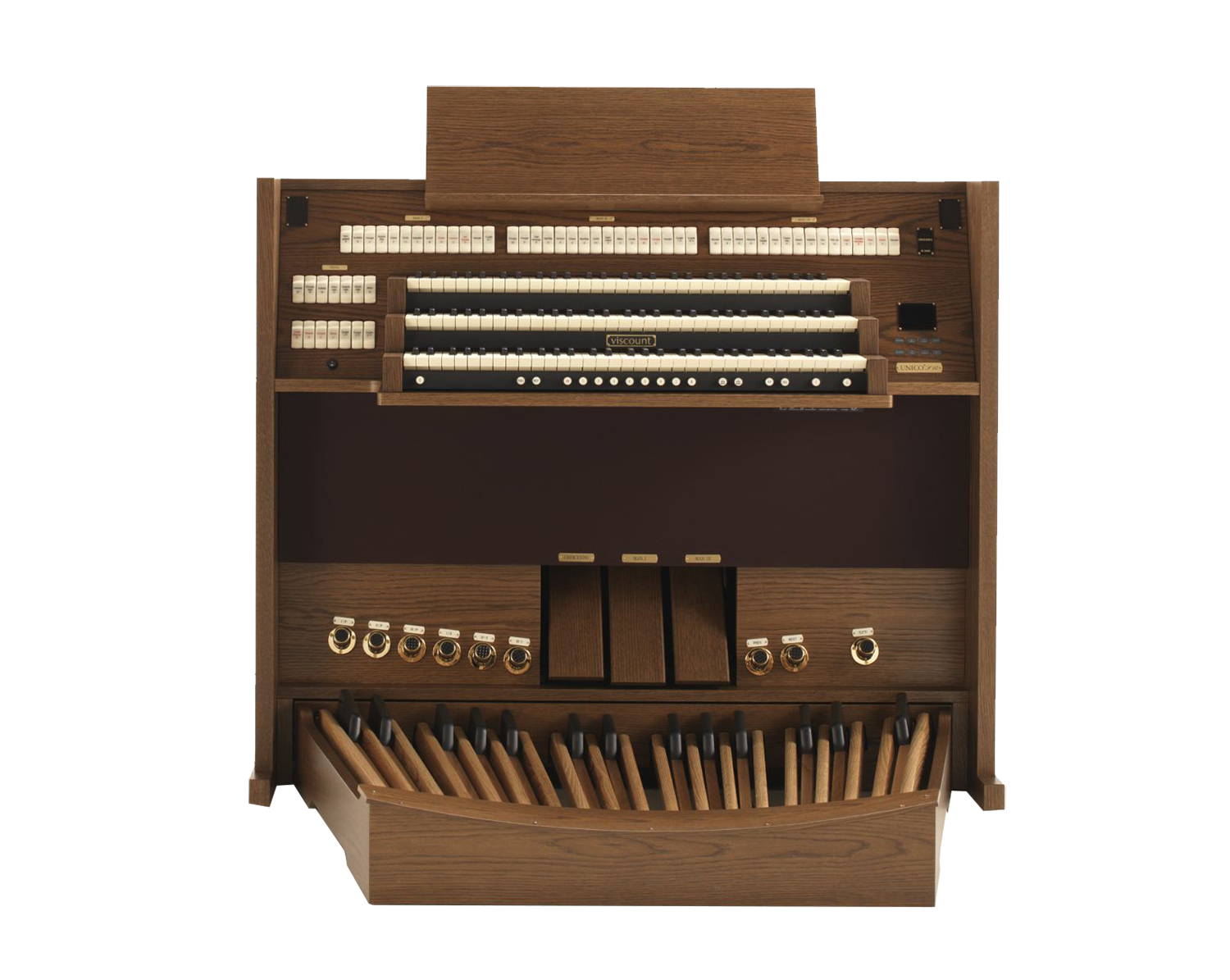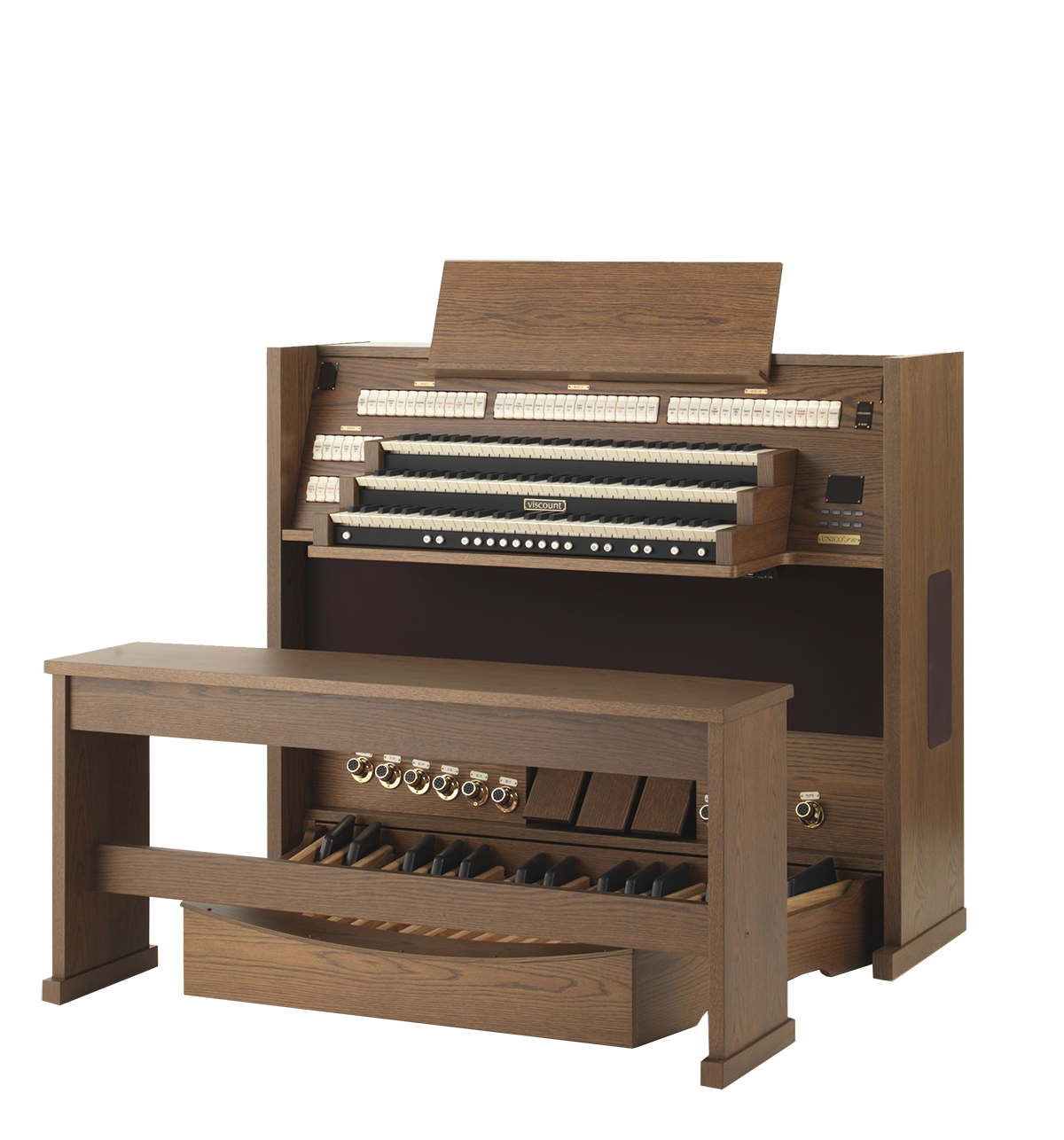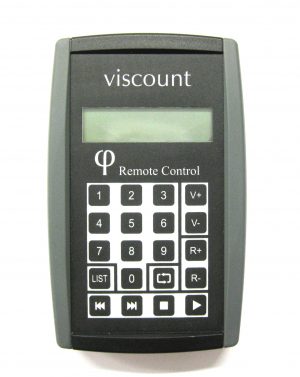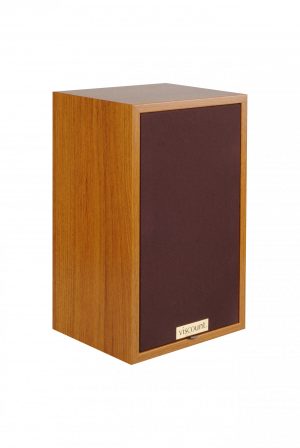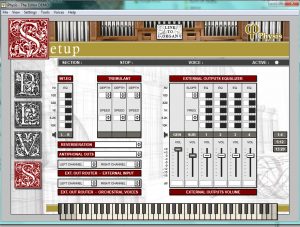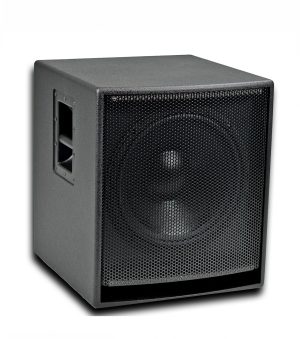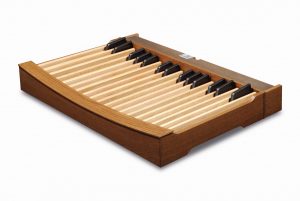SONUS 60 is a three-manual organ with a 32 notes pedalboard and 50 register-tabs, each of which can select hundreds of organ and orchestra voices.
It is available with real wood cabinet in the Deluxe version (SONUS 60 DLX) or with laminate console.
SONUS 60 comes with 8 organ styles (4 pre-set and 4 programmable) that allow the organist to create and store an infinite number of combinations, either in the 128 internal memory locations or externally via USB memory. The parameter settings are easily accessible through the graphic display on the front panel. The “Tracker Action” style keyboard accurately detects touch by obtaining the speed of actuation of the keys, making it possible to feel a “Tracker Touch” effect, i.e. the correlation between the “touch” of the organist and the transient attack of each virtual pipe.
Developed with the award-winning and patented Physis® physical modelling technology, which reproduces the physical phenomena involved in the sound generation of the pipe organ, Sonus 60 is capable of generating the highest-fidelity, most authentic church organ sound.
Parameter settings are easy to access, modify and store through the graphic display on the front panel.
SONUS 60 uses a revolutionary sound system developed by Viscount called RAR (Real Audio Rendering). It is able to simulate multiple sound reflections of the walls, projecting the organist at center stage and involving them in an unforgettable sound experience – even from their living room or studio.
